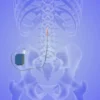Provided By: Mayo Clinic Health System
If you are like at least 3 out of 10 people in the U.S. who experience chronic pain, you know what a big problem it is. While short-term pain typically heals, chronic pain lasts longer than three months, hurts most of the time, and gets in the way of daily activities.
Chronic pain has many causes, including injuries, illnesses, and prolonged physical, emotional or social stress. The brain decides when you are in pain, but that does not mean that pain is in your head. For example, pain is not always caused by a broken or worn-out body part. Chronic pain can be due to the brain reading signals sent from the body and sending signals back to your body. The more signals to the brain and the more the brain labels the signals as pain, often the longer the difficulties with pain can last.
Everyone’s pain is different, and there are many causes of worsening pain. Stress, depression, anger, anxiety or fear, unhelpful thoughts, isolation, underdoing, and overdoing can create more pain signals in the body. Putting yourself in charge helps you manage chronic pain better.
That’s where chronic pain management comes in.
The goal of chronic pain management is to help you have the best function and quality of life possible. You and your providers can create a pain plan that can put you in control.
These techniques are tried-and-true strategies — when used consistently and together — to help you manage chronic pain:
1. Stretch, practice good posture, and move gently.
Try full body stretches, gentle yoga, or tai chi for about 10 to 15 minutes daily.
2. Stay active.
An activity routine, as recommended by your healthcare provider, can strengthen muscles, improve mood and distract from the pain.
3. Reduce stress and practice relaxation techniques.
This can include the use of relaxed breathing, passive or progressive muscle relaxation, or mindfulness. Smartphone applications that focus on relaxation and mindfulness can be useful for this.
4. Pace yourself.
Doing too much or too little can increase pain. Daily planning with a balance of daily tasks, recreation, and other responsibilities can help with structure and routine. Taking breaks before the pain level is too high can decrease the frustration that may happen with a pain flare.
5. Address other conditions that worsen the pain.
Studies have shown treating anxiety and depression may reduce pain and improve quality of life. Speak with your health care provider if you notice difficulties with anxiety or depression.
6. Maintain a positive outlook by scheduling enjoyable activities.
Managing pain often means creating opportunities to be positive. Taking part in enjoyable activities has been shown to decrease the effects of pain signals in the body.
7. Stay connected with others.
Spending time with friends and family, in person or via video chat, can decrease focus on the pain.
8. Get the sleep you need.
Poor sleep often can worsen the pain. Good sleep hygiene, relaxation techniques, and a calming nighttime routine can improve sleep.
These self-management tools, along with the appropriate use of over-the-counter and prescription medications, provide a full treatment plan for managing persistent pain.
If you have difficulty with pain, speak with your health care provider regarding a comprehensive pain treatment plan that will help put you back in control of your life.





